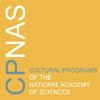The Journal of Art Crime, published by ARCA, is the first peer-reviewed interdisciplinary academic journal in the study of art crime. This twice-yearly publication will provide vital information for members of the art trade, museums, security professionals, police, art lawyers, cultural ministries, private collectors, gallery owners and dealers, conservators, insurers, cultural heritage NGOs, as well as academics in the fields of criminology, law, art history, history, sociology, policing, security, and archaeology.
Our editorial board includes the following prominent professionals:
- Lord Colin Renfrew, Professor of Archaeology, University of Cambridge
- Petrus van Duyne, Professor of Criminology, University of Tilburg, Netherlands
- Matjaz Jager, Director, Institute of Criminology, Slovenia
- Bojan Dobovsek, Professor of Criminology, University of Maribor, Slovenia
- Travis McDade, Professor of Library Studies, University of Illinois Law School, US
- Ken Polk, Professor of Criminology, University of Melbourne, Australia
- David Simon, Professor of Art History, Colby College, US
- Erik Nemeth, The Getty Research Institute, US
- Todd Fell, Yale University Libraries, US
- Liisa van Vliet, Accenture Consulting, UK
- Dick Drent, Director of Security, the Van Gogh Museum, Netherlands
- Michael Kirchner, CPP, CIPM, Director of Safety and Security, Harvard Art Museums
- Anthony Amore, Director of Security, Isabella Stewart Gardner Museum, US
- Dennis Ahern, Director of Security, the Tate Museums, UK
- Richard Ellis, former Director of Scotland Yard's Arts and Antiquities Unit, UK
- Col. Giovanni Pastore, Vice-Commandante of the Carabinieri Art Protection Unit, Italy
- Neil Brodie, Professor of Archaeology, Stamford University, US
- David Gill, Professor of Archaeology, University of Swansea, Wales
- Edgar Tijhuis, Attorney, Amsterdam, Netherlands
- Benoit van Asbroeck, Attorney, Brussels, Belgium
- Howard Spiegler, Attorney, US
- Judah Best, Attorney and Smithsonian Commissioner, US
Content
Each issue of The Journal of Art Crime will include the following:
-At least five peer-reviewed academic essays
-Regular columns from expert contributors:
- Letter from the Editor, by ARCA Director Noah Charney
- Art Law & Policy, by Donn Zaretsky
- Antiquities & Archaeology, by David Gill
- Fine Art Crime, by Derek Fincham
- Security & Policing Update, by Stevan Layne
- Lessons from the History of Art Crime, by Noah Charney
-Summaries of major news and events related to art crime and cultural propertyover the six months leading up to each issue, including expert commentary
-Statistics and data on art crime, with commentary
-Informed editorials on contemporary issues
-Profiles of professionals working against art crime
-Book reviews
-Conference & Publication Listings
-Calls for Papers
-Most Wanted Artworks, with descriptions, information, and images
-Complete Literature Review & Bibliography, with commentary, in the subjects of:
- War Looting
- Art Theft
- Vandalism/Iconoclasm
- Antiquities
- Forgery/Deception
- Security/Policing
Between the academic and practical information provided, The Journal of Art Crime will be the best one-stop source for up-to-date information on all aspects of art crime.
Submissions
Submissions are welcome at any time. We publish articles from both academics and professionals, related to art crime, its history, and its repercussions. Relevant fields include criminology, law, art history, history, sociology, policing, security, archaeology, and conservation.
Academic essays should be 4000-9000 words in length (including footnotes, excluding bibliography). Please adhere to MLA style guidelines. Relevant images should be sent in jpg form in a separate email. Authors are responsible for securing any necessary permissions for the reproduction of images related to their articles. Essays considered to be of merit by peers may be returned to their authors along with rewrite guidelines which must be applied before publication. Average turnover for peer-reviewed essays is eight weeks, and two weeks for editorial or review material.
Each academic essay should be accompanied by a cover page that includes:
-author's name, affiliation, and contact information
-biographical information (up to 100 words)
-an abstract (100-200 words in length)
-six keywords that characterize the content of the article.
Please remove all identifying material from the body of the article.
Editorial proposals or submissions (book reviews, letters, etc) should include:
-brief abstract of proposed or submitted topic (200 word maximum)
-author's name, affiliation, and contact information
-biographical information (up to 100 words)
The Journal of Art Crime will also include book and exhibition reviews, conference write-ups, summaries of major recent art crimes, art-related legislation, and other relevant news, and editorial columns. The Journal welcomes submissions or proposals for any of the aforementioned.
Please send all submissions to editor@artcrime.info as an attachment in Word format.
SubscriptionsThe Journal of Art Crime will be published both as an e-journal and in printed form. Subscribers may choose the electronic form alone, or purchase the electronic and print form as a package, priced for individuals and institutions. All income from subscriptions will go directly to fund ARCA's non-profit activities.
The first issue will be published in the Spring of 2009, the second issue the following Fall. Please visit www.artcrime.info to subscribe.Please direct any queries to editor@artcrime.info.

